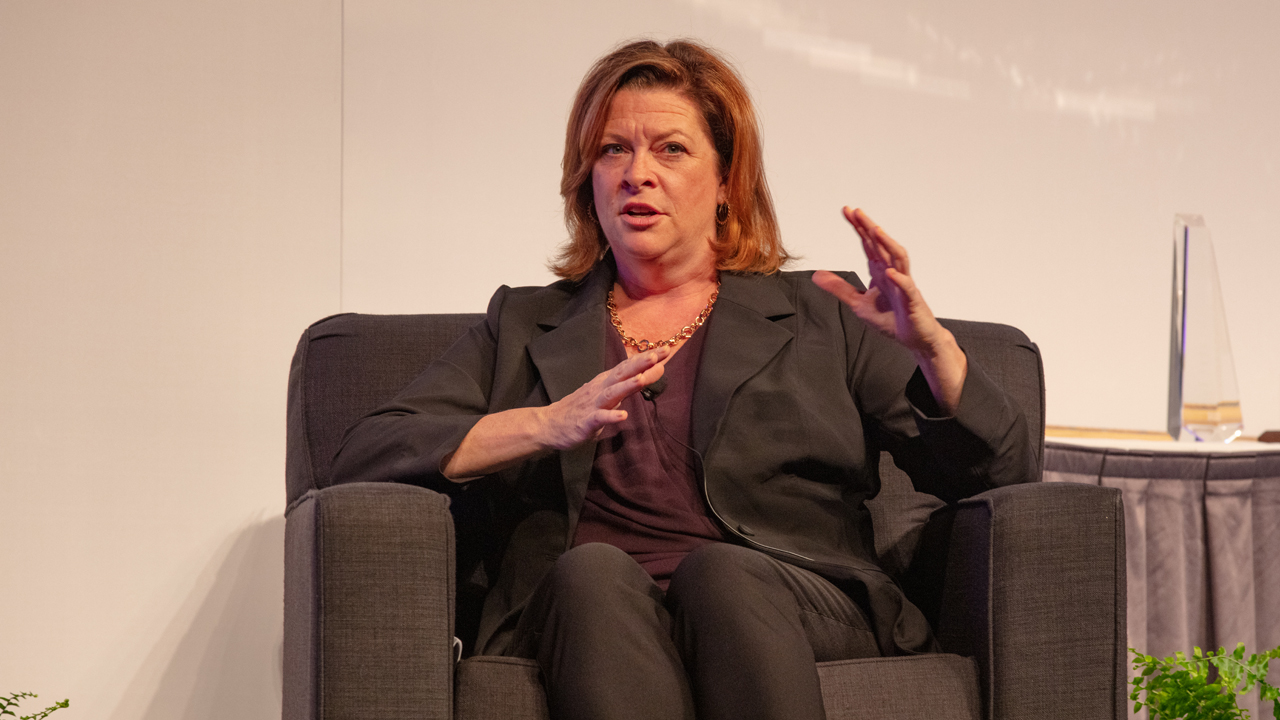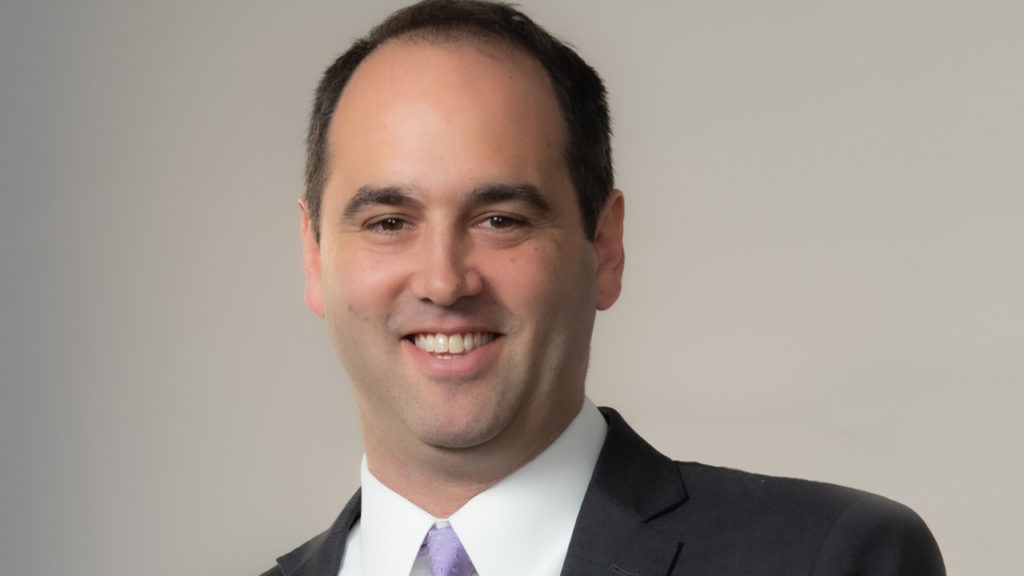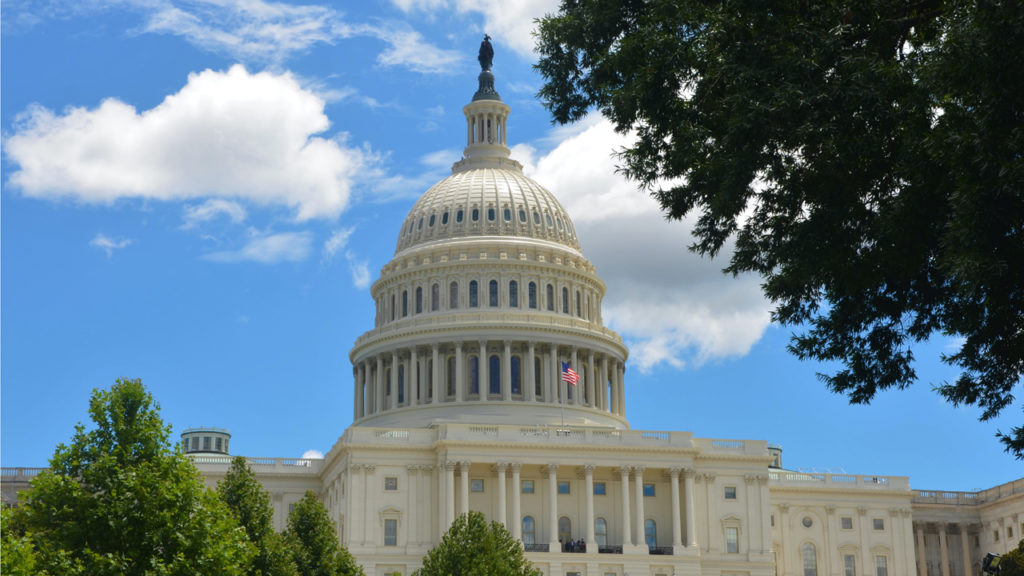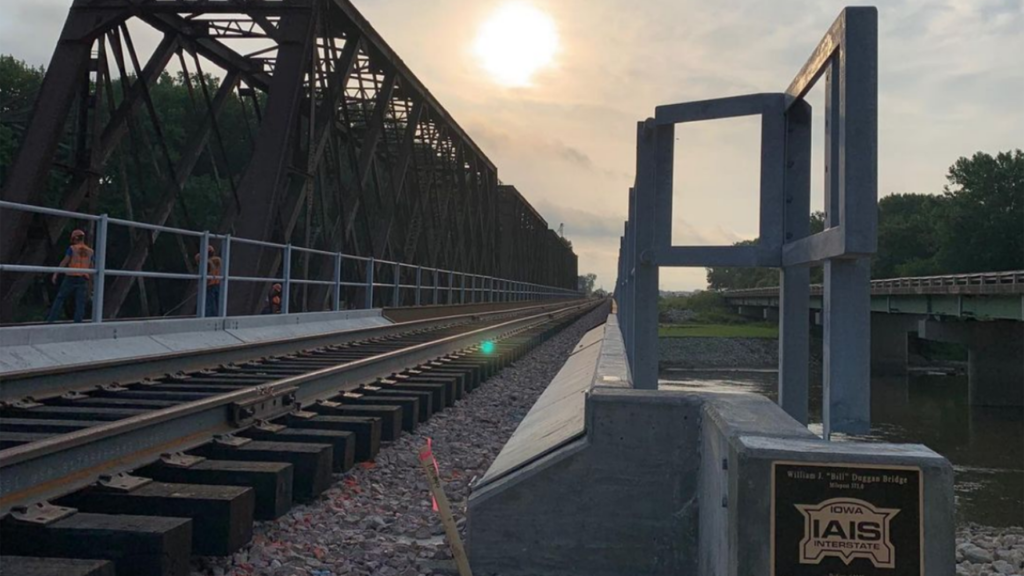
FRA Deputy Talks CRISI, Crew Size with ASLRRA
Written by Marybeth Luczak, Executive Editor
Jennifer Mitchell, Deputy Administrator, FRA (Brandon Sloan Photography, ASLRRA)
Less than a month after being appointed FRA Deputy Administrator, Jennifer Mitchell discussed agency priorities and how small roads can best position themselves for CRISI program grants, among other issues, during the American Short Line and Regional Railroad Association’s (ASLRRA) May 1-3 conference and exhibition in St. Louis.
Mitchell—who received Honorable Mention in Railway Age’s 2022 Readers’ Influential Leaders poll and was selected as a Railway Age 2018 Women in Rail honoree—is no stranger to the rail industry. Previously, she led the Virginia Department of Rail and Public Transportation (Virginia DRPT) under two successive governors, during which time she successfully negotiated an agreement involving Norfolk Southern, CSX, the District of Columbia, the state of Maryland, the commonwealth of Virginia, Amtrak, Virginia Railway Express and MARC to expand and renovate the Long Bridge over the Potomac River and expand rail capacity between Virginia and Maryland, and extend the Northeast Corridor into Virginia and potentially into the Carolinas.
As Deputy Administrator at the Federal Railroad Administration, she is now charged with overseeing the largest-ever public investment in the expansion and development of passenger and freight rail service in the nation’s history through the Infrastructure Investment and Jobs Act (IIJA), which was signed Nov. 15, 2021.
Mitchell told ASLRRA conference attendees that FRA is focused on three strategic priorities: safety, rail network development, and workforce development and engagement. The agency is now gearing up to announce its selections for the Fiscal Year 2021 CRISI (Consolidated Rail Infrastructure and Safety Improvements) grant program, and expects to issue a Notice of Funding Opportunity this fall for $1.5 billion in CRISI grants for FY22. “Never in FRA’s history has the outlook for rail been so promising,” she said.
Mitchell noted, however, that she is mindful of ongoing pandemic- and supply chain-related challenges. “The supply chain disruptions experienced over the past year have underscored the pivotal role that short lines play, as some ports rely entirely on them,” Mitchell said. “On any given day, short lines already move a quarter of all railcars. With rail volumes expected to grow in the next 10 years, there are opportunities to fill supply chain gaps and continue to grow your businesses. Short lines are also uniquely positioned to help alleviate trip points over the long term and improve the flow of goods locally and nationally. So, like so many people across the USDOT, this issue is very much a priority of mine.”
Following is the May 2 Q&A with Mitchell, conducted by ASLRRA President Chuck Baker. (Content is edited for length and clarity.)
Baker, ASLRRA: What prompted you to join FRA and what are you personally looking to accomplish there?
Mitchell, FRA: I’ve been in transportation my entire career, mostly working on rail transit projects. While at Virginia DRPT, I had the opportunity to get much more involved in freight rail issues and passenger rail issues. I was very excited to have the opportunity [to join FRA] with everything that’s going on with the infrastructure bill [IIJA] right now. It’s such an exciting time, and I really wanted to have the opportunity to take some of what I learned at Virginia DRPT and advance that to a national level. I was in Virginia for eight years, and I’m really looking forward to working with other areas of the country.
Baker, ASLRRA: What can we do as an association and as short lines to help you transition to FRA—whether that’s through site visits or briefings or a continued focus on safety?
Mitchell, FRA: Certainly going out and seeing some of your properties and projects, I’m really looking forward to that. I know that I’m going to start ramping up my travel soon for various things and will have my staff reaching out so I can do site visits. I really want to see some projects that are either under way or may be subject to grant applications in the future, and also ones that we’ve given grants to in the past to see how well those are doing. I will have an open door policy. If you have questions and want to reach out to us—particularly with our grant programs—we have staff providing technical assistance. I look forward to hearing from you. We are always working to tell our story—whether that’s to members of Congress, state and local officials, other members of the industry. We’re always looking to give examples, to talk about the work that our federal funding is doing, the benefits it’s creating in our communities.

Baker, ASLRRA: There are quite a few state grant and tax credit programs out there supporting short lines, and in Virginia, you oversaw the Short Line Railway Preservation and Development Fund, as well as freight rail generally. Can you share any best practices or lessons learned from that program as it relates to your new job at FRA and to other state programs?
Mitchell, FRA: We were very lucky in Virginia to have great support and funding available for freight rail programs. We had a program called the Rail Enhancement Fund and a short line preservation program, and we had a rail industrial access program, which allowed us to provide funding to short lines or companies building rail spurs. We used a benefit cost analysis tool—just like FRA does in our CRISI program—that provided a very important piece of information. But it always came down to being able to talk about the trucks we were removing from the roads. That was a very tangible thing that lawmakers could understand, elected officials could understand, and really helped us justify these programs over time. What I saw as well was how beneficial some of the smaller projects were. Some of our big projects that were in the tens of millions of dollars would get a lot of attention, but we got so much “bang for the buck” out of the smaller projects—sometimes a grant for a couple hundred thousand dollars to improve the state of good repair for a short line railroad or an industrial access grant. Certainly I believe that we see that same value at FRA with our CRISI program, with other potential grant opportunities—really being able to focus on the bang for the buck that you get from some of these smaller projects.
Baker, ASLRRA: Can you speak to FRA’s priorities regarding CRISI and how short lines can best position themselves for CRISI grants?
Mitchell, FRA: First of all, thank you to the association, all of your members, for supporting the infrastructure bill [IIJA]. It was incredibly important, especially because the short line railroads touch so many congressional districts, and you all were, I’m sure, able to provide some tangible examples of why rail is so important. So, there is a huge increase in funding for CRISI [IIJA allocates $1 billion annually for the CRISI program, up from $360 million in FY21, and also expands eligibility to include projects that foster rail innovation, reduce emissions, or improve pedestrian safety along railroad tracks]. The program has traditionally been between four to six times oversubscribed, so we’ll start to see more and more projects in this pipeline that are going to get funded. As far as being competitive, pay attention to our grant guidelines. I know that sounds very obvious, but unfortunately we see some applications that disregard some of the basic things; so make sure you answer everything correctly. Also, pay attention to our priorities: safety, equity, climate change, workforce development. We are going to continue to emphasize those as we review our grant applications in the next several cycles. The more that you can address those, the better.
Baker, ASLRRA: There’s a huge increase in CRISI funding and a much bigger increase in passenger rail funding, so there are a lot of new responsibilities at FRA. Can you speak to the FRA’s efforts to staff up as well as FRA’s ability to handle all of this, and get grants out the door?
Mitchell, FRA: It’s a huge issue. We are hiring like crazy as you can imagine. We hope to hire at least 100 people by the end of this calendar year; a lot of them will be in our divisions that manage grants and manage the grant selection process. It will be a challenge. And we’re looking at other ways to help streamline applications. There’s a common grant application that’s out right now for what we call our mega-projects [for example]. We will also try to work through the early identification of regulatory issues that may hang up grants, and that may hang up getting grants awarded on a timely basis. Those are all things we are going to be looking at because we realize that we have a lot of money to get out the door.
Baker, ASLRRA: I encourage you if you see any sort of systematic issues on short line applications, or if after we get grants, we keep being hung up on something, like NEPA [National Environmental Policy Act] to talk with us and we can put together webinars or seminars or small group conversations pretty quickly. Short lines are obviously highly motivated to win grants, but also very highly motivated to go from winning to building, and one of the frustrations with the federal government is that it doesn’t really move at the speed of business.
Mitchell, FRA: Likewise, if you’re seeing systemic issues on our side as well. I know from being in Virginia where we were giving out grants, I did hear a lot from grantees about things getting stuck in legal review. We also feel the obligation, pressure to get money out the door. I recognize how much inflation is an issue right now, and with delays getting money out the door, that just impacts the cost of the project. Certainly it is an onus to make sure we’re not holding things up.
Baker, ASLRRA: We all know that a crew-size rule is pending and currently at the OMB [Office of Management and Budget] for review. I think it’s fair to say from our safety data that we’ve never seen any systematic effect on safety whether a short line runs a two-person or one-person crew or has one crew member on the ground and one in the cab. Can you speak to the status of the rule?
Mitchell, FRA: Since there is a rulemaking out, I can’t really comment on any specifics associated with it, but we really encourage you all to provide input when the period becomes available to do so. I’m very aware of how important this is to the short lines.

Baker, ASLRRA: FRA’s primary role historically has been as a safety regulator, and also historically FRA has played a role as an advocate of the freight rail industry both externally and even internally at the USDOT. Can you speak to how FRA will balance that role and manage expanded grants programs?
Mitchell, FRA: It is a balance. I do see an opportunity that we have available to us right now for a culture shift as well. We have a lot to focus on right now. The good news is that you’ve got an administration that could not be more supportive of rail, whether that’s passenger rail or freight rail. There is a tremendous level of support at the highest levels for rail because of the way it takes trucks off the road, as well as the safety, the environment [factors]. We have a lot to do especially on the grant side. While we have a regulatory role, I believe we also have a role to partner with the railroads and that is something we did a lot of in Virginia. We really viewed ourselves as partners and we had some pretty big deals with the Class I’s—CSX and Norfolk Southern—multi-billion dollar deals that were challenging to work through and we finally got there. We really did partner very closely and likewise with our short line railroads, too, and I think we’ll continue to see that evolve at FRA.
Baker, ASLRRA: Can you speak to the supply chain and FRA’s actions on that?
Mitchell, FRA: Yes. This is an issue I’m personally going to be very engaged with on behalf of the [FRA] Administrator and the [USDOT] Secretary. We’re seeing a lot of disruptions, and we are certainly looking for more information from you all about how the short lines can help alleviate some of those. I know we see opportunities for pop up yards and facilities at ports. We certainly are looking at our grant programs, looking for projects that have a supply chain benefit. We also recognize the workforce is a huge issue within rail like it is in other industries, so as we are looking at opportunities to address those challenges as well.




